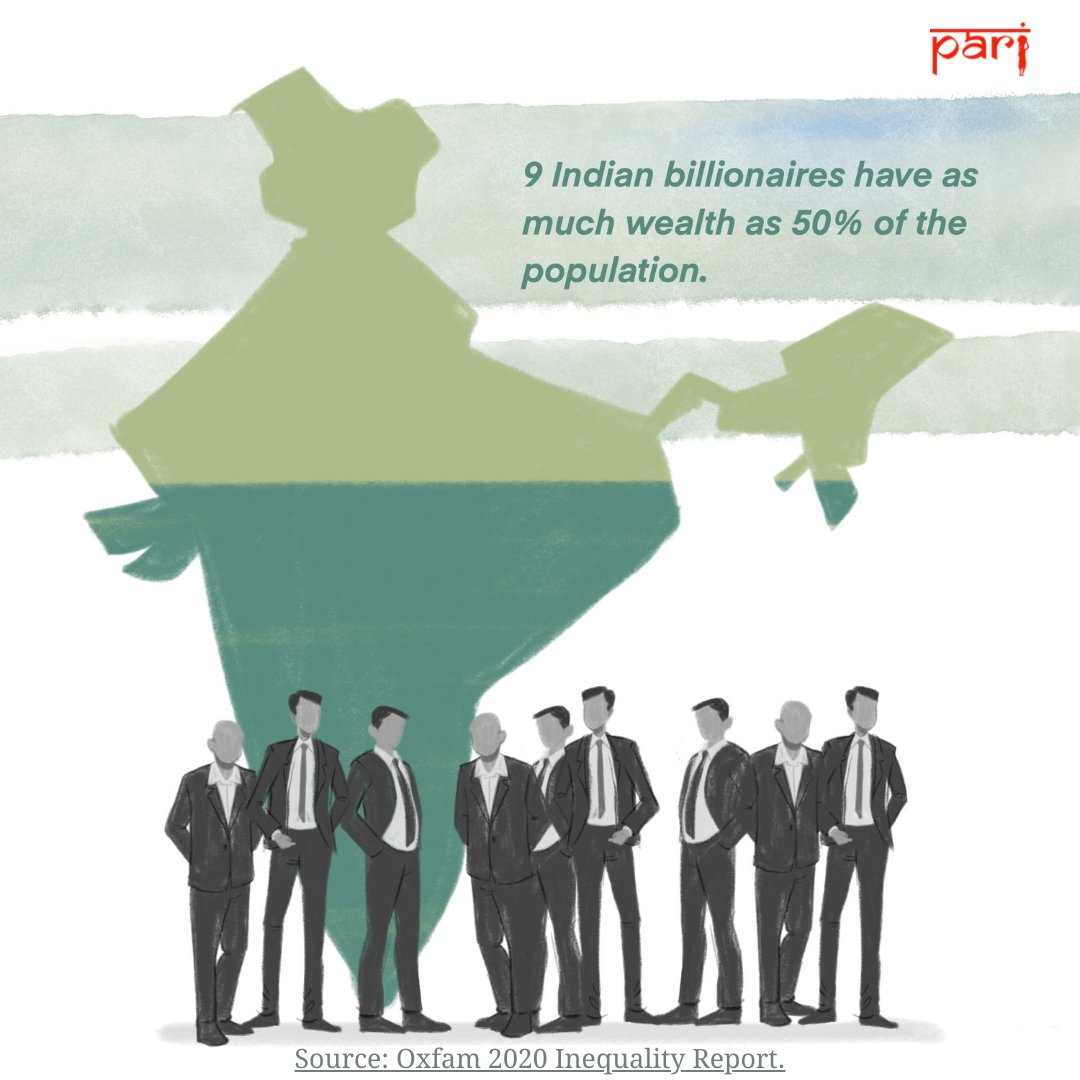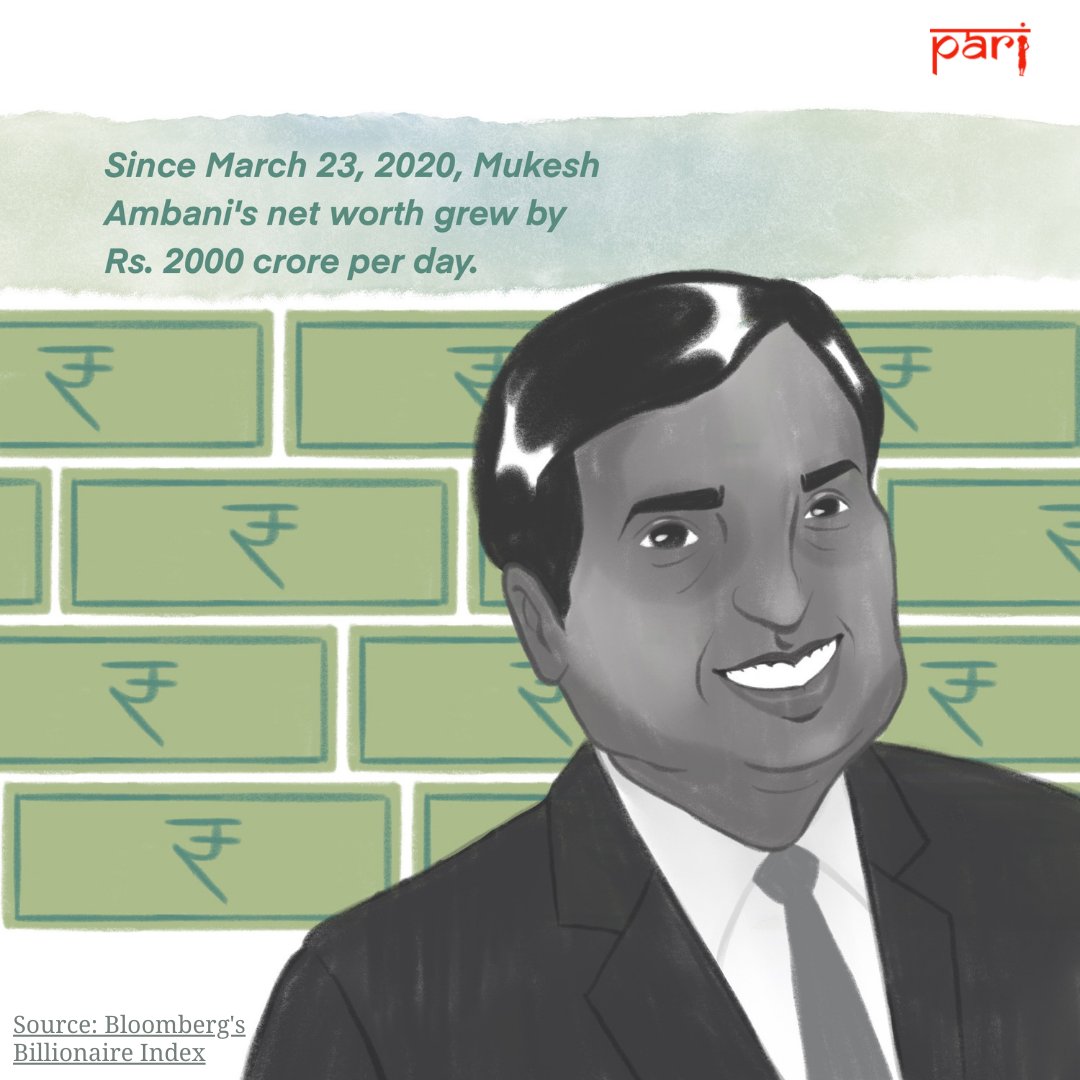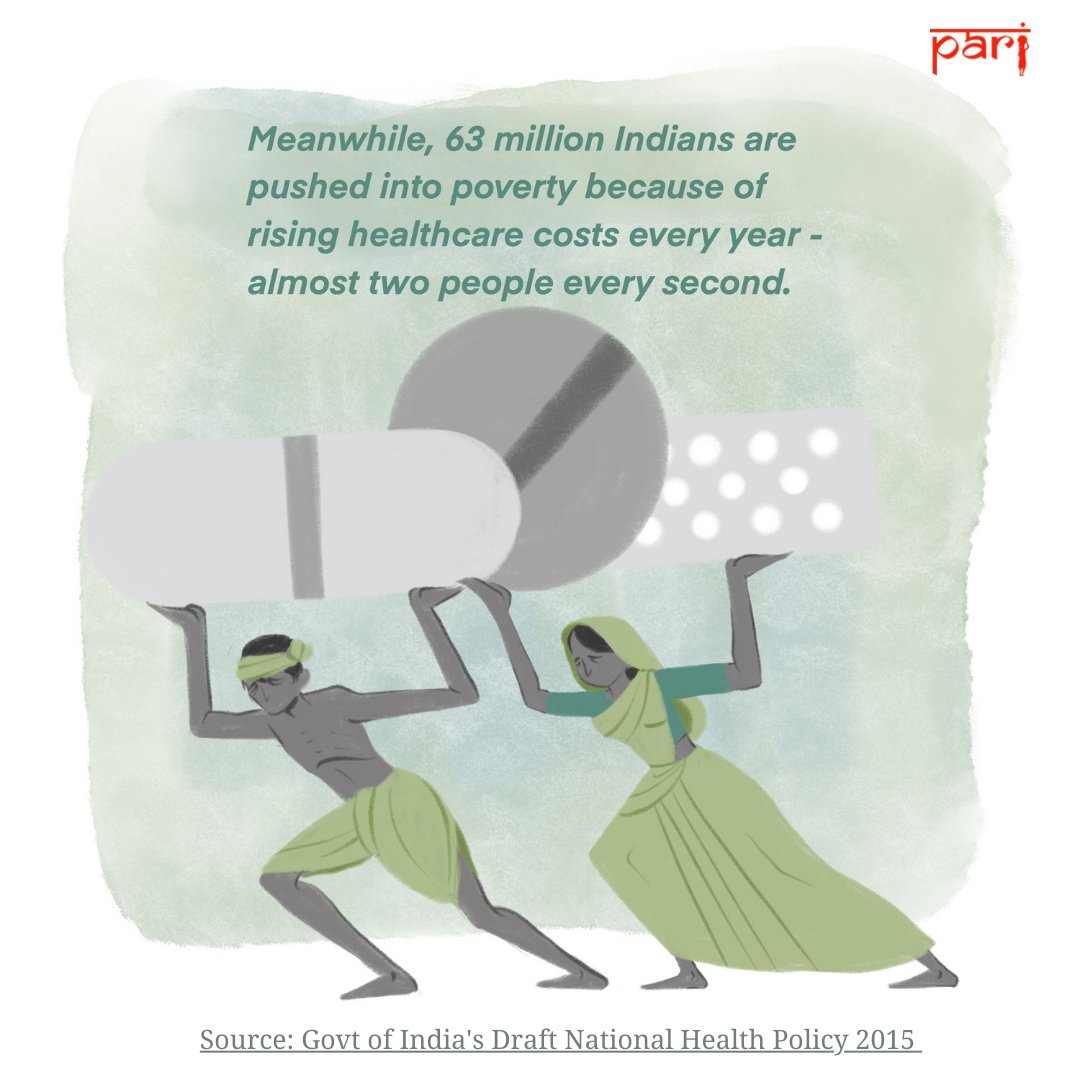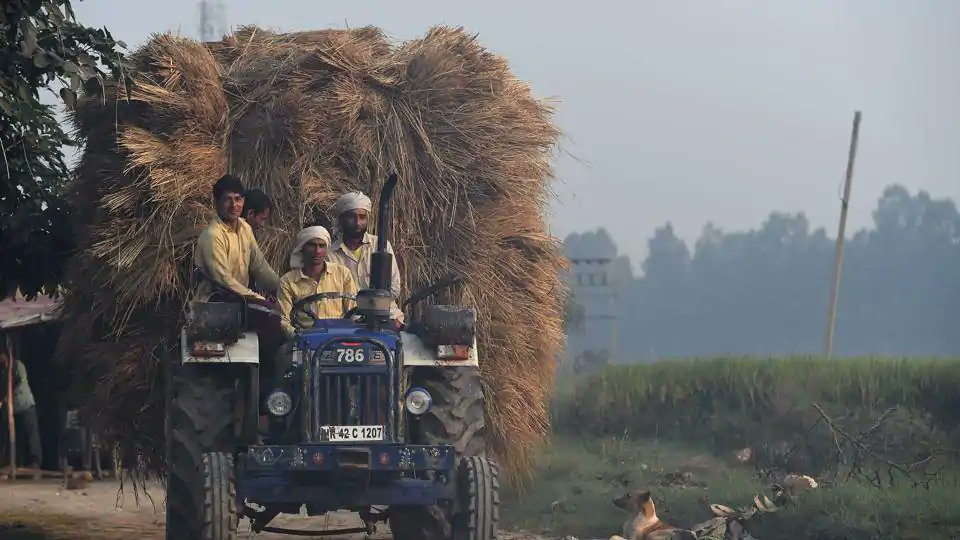
Inequality & the pandemic
1/ Mukesh Ambani could personally pay each of RIL’s 2 Lakh employees a Rs 1.47 crore bonus today & still be as wealthy as he was at the beginning of the pandemic
Meanwhile, nearly 40 crore Indian workers are projected to sink into poverty due to COVID-19


1/ Mukesh Ambani could personally pay each of RIL’s 2 Lakh employees a Rs 1.47 crore bonus today & still be as wealthy as he was at the beginning of the pandemic
Meanwhile, nearly 40 crore Indian workers are projected to sink into poverty due to COVID-19



2/ ‘Pandemic-profiting’ is a global phenomenon. The top 25 billionaires increased their wealth by $255 billion btwn mid-March & May.
32 of the world’s most profitable companies are together expected to make $109 billion more than the avg of their profits in the last four years.

32 of the world’s most profitable companies are together expected to make $109 billion more than the avg of their profits in the last four years.


3/ The paper states that the ‘pandemic profits’ of these 32 companies could be redeployed in funding global Covid-19 testing needs (estimated at $6 billion), and delivering vaccines to everyone on the planet (estimated cost $71 billion)
Full report: ruralindiaonline.org/library/resour…

Full report: ruralindiaonline.org/library/resour…


A big thank you to Archita Joshi for summarizing the Oxfam Report, @Farfarfarahway for her wonderful illustrations, and @BansariKamdar for compiling the data used in the illustrations.
• • •
Missing some Tweet in this thread? You can try to
force a refresh




